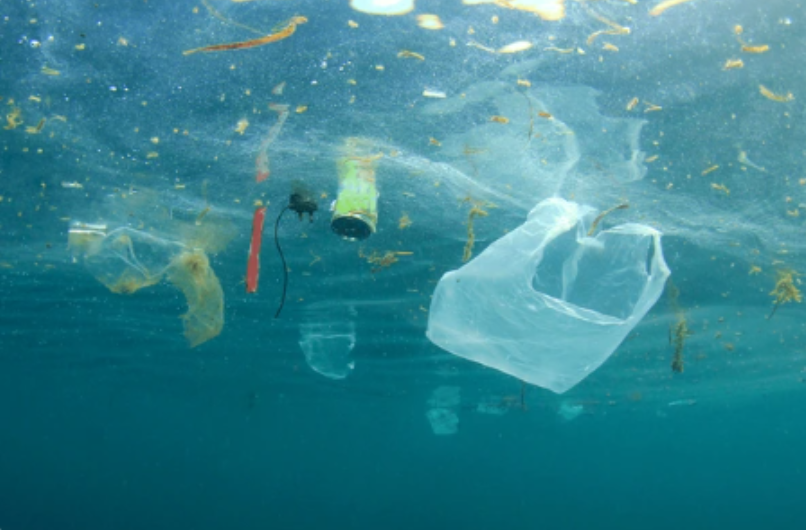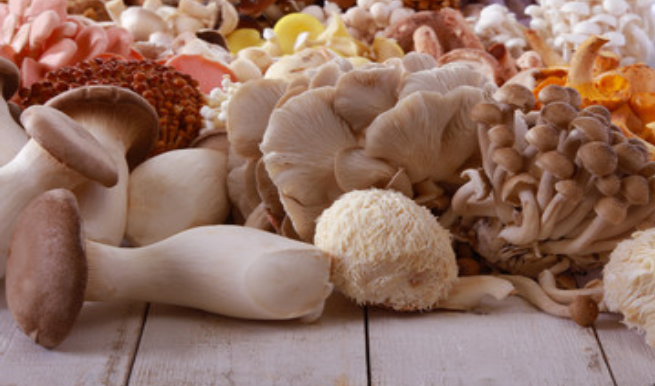Imagine a world where plastic, which is made from fossil fuels, is tough to recycle and usually winds up cluttering landfills, landscapes, and waterways. Well, we do not need to imagine it; this is our reality. Every day, approximately 2,000 garbage trucks’ worth of plastic waste are discarded into the world’s lakes, rivers, and oceans every day.
Plastic pollution is a worldwide issue. Lakes, rivers, and seas are contaminated annually by the 19–23 million tonnes of plastic garbage that seep into aquatic environments, according to the UNEP. Millions of people’s livelihoods, capacity to produce food, and social well-being can all be negatively impacted by plastic pollution, which can modify habitats and natural processes and lessen ecosystems’ capacity to adapt to climate change.

Searching for Sustainable Alternatives from Plastics:
To tackle this, researchers have turned to fungi that have a variety of functions and can be used in a million ways. Mushrooms are composed of a network of filaments called hyphae. Under optimal development conditions, fruiting bodies—structures specialised for producing spores—appear frequently all at once, making so-called mycelial products easy to nurture and propagate.
The flexibility, firmness, and protective properties of mycelium-based products are similar to those of polystyrene, making them suitable for packaging and transportation. Furthermore, they are entirely biodegradable and compostable, breaking down naturally in the environment without leaving behind any hazardous residues or microplastics. These materials’ scalable and energy-efficient production process allows them to compete with plastics in terms of both cost and performance.
What is Mycelium and How Does It Work?
Mycelium is made up of tiny filaments called hyphae. Under the right conditions, these filaments grow rapidly and can form dense, interconnected structures. It may be grown from almost any kind of agricultural waste, including pistachio shells and sawdust. Inside the substance, which can take on any shape and create natural polymers that cling to one another like the strongest glue, the mushrooms grow together. By baking the fungi at certain temperatures, they become inert, preventing the mushroom from suddenly growing anew during a rainfall.
In this way, not only are mushrooms a tasty addition to various cuisines, but they may soon take the place of materials like polystyrene, protective packaging, insulation, acoustic insulation, furniture, aquatic materials, and even leather goods.

How Does This Eco-Friendly Mycelium Packaging Compare to Plastic?
●Sustainability: The production of mycelium products requires less energy and produces fewer carbon emissions because they are made from agricultural waste and renewable materials.
●Biodegradability: Unlike traditional plastics, which may remain in the environment for decades, mycelium-based packaging breaks down naturally in a matter of weeks, leaving no toxic residues or microplastics behind.
●Performance: Polystyrene foam, which is utilised for insulation and transportation, is not as robust, light, or protective as mycelium packaging.
●Safety: These non-toxic materials are safe for use by both humans and the environment.

Real World Work Done Using Mushrooms:
Several companies are working towards innovations in the biodegradable, eco-friendly packaging market.
●BETi (Biotech Era Transforming India), based in Indore, is pioneering sustainable solutions by processing mushroom substrate left after harvesting, utilizing the natural adhesive properties of mycelium to create biodegradable materials. These eco-friendly products not only provide an alternative to plastic but also support local farmers by repurposing agricultural waste, reducing environmental pollution. BETi’s innovative approach is contributing to India’s sustainability goals while fostering community-driven environmental change.
●In the same way that other organic materials like rubber or cork are curated, MycoWorks, a group of creative engineers, designers, and biologists, is dedicated to removing the vegetative tissues of mushrooms and forming them into new forms.
●Evocative Design, based in New York, is creating sustainable materials by using mycelium for flame-resistant packaging and as a bonding agent for wood paneling. Their environmentally friendly products demonstrate the potential of mycelium and encourage people to embrace sustainable practices by providing biodegradable substitutes for plastic and conventional adhesives.
The Future of Mushroom-Based Products
Eventually, further research will improve the various attributes of fungi, reducing our dependency on plastics and making them more appropriate for uses other than packaging. Even if there have been a number of continuous initiatives in this area, it will be a while before it significantly affects the replaceability of plastic. Mycelium presents a viable, sustainable substitute that has the potential to significantly lower plastic pollution and aid in the healing of our world, even though it may not yet be able to completely replace plastics.
References:
Plastic Pollution – UNEP: www.unep.org/plastic-pollution
Ecovative : https://mushroompackaging.com/
https://in.linkedin.com/company/beti-innovative-pvt-ltd
https://thebulletin.org/2023/01/unpacking-the-packaging-potential-of-mycelium-the-mushroom-roots-of-many-uses/

